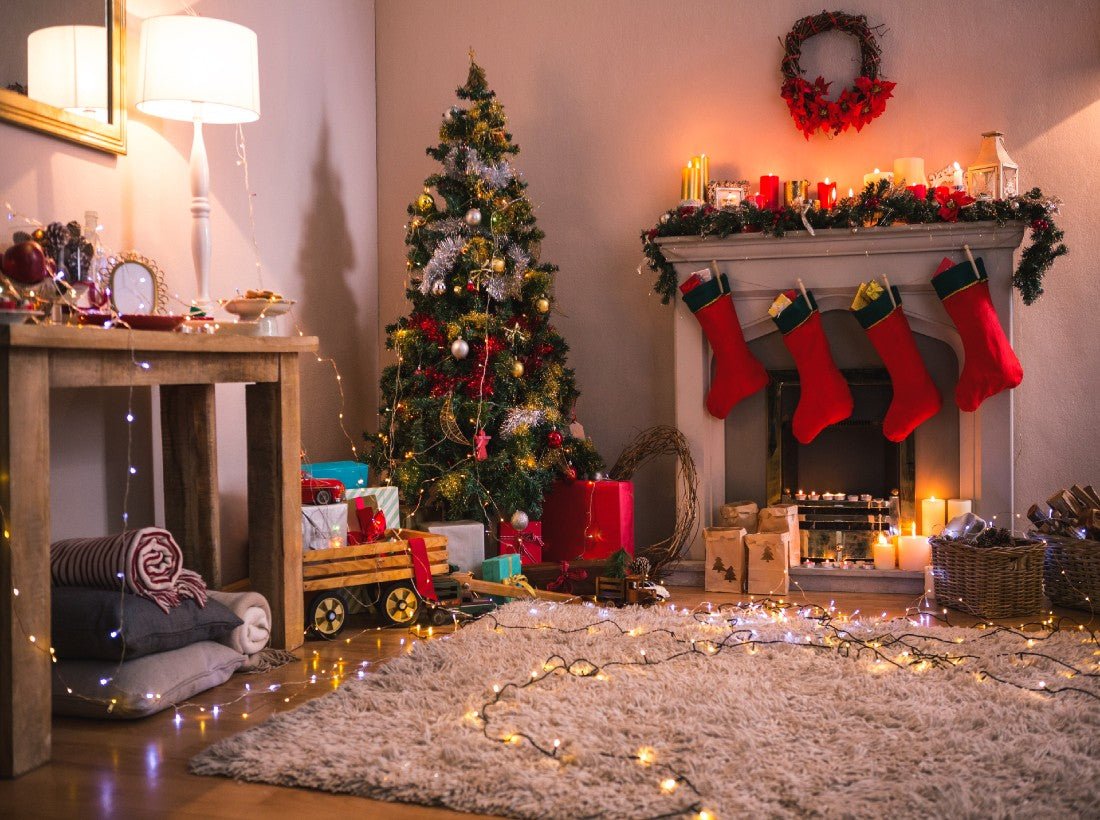With the festivities rolling in, you’ll have heard the timeless debate that seems to pop up - real vs. artificial Christmas trees.
The yuletide dilemma of choosing between the two has sparked many conversations and scientific studies over the years. People have passionately defended their favorite Christmas tree type for so long that it’s like a little holiday tradition in its own right.
But as much as we’d love to play Tree Arbiter, this conversation is not as simple as you think.
Ready to get to the root of it?
Which Is Better: A Real or An Artificial Christmas Tree?
It depends.
We’ll be talking a lot about this topic but at the end of the day, it all boils down to personal preferences. Fortunately (or unfortunately), there’s no one-size-fits-all answer. It’s all about what jingles your bells and brightens your spirit.
So, to find the best tree for YOU, we’ll go through the pros and cons of real and artificial Christmas trees. By the time we’re done, you might even become a hardcore fan of one contender and defend its honor during the next Christmas party.
Pros and Cons of Real Christmas Trees
Real Christmas trees are up first on the chopping block. We’ll talk about the good and the bad that come with this option and whether it’s a good choice for you.
The Good
Let’s start positive - real Christmas trees have much to offer. Real Christmas trees embody the holiday traditions in many regions worldwide.
So, what’s so good about them?
They’re traditional
Real Christmas trees are the cornerstones of holiday traditions. They’ve been a staple for seasonal celebrations for centuries. American families cherish the annual ritual of driving out to a tree farm, selecting the perfect tree, decorating it, and enjoying its hypnotizing scent. This tradition fosters a sense of nostalgia that many consider deeply meaningful.
They’re sustainable
Contrary to popular belief, cutting down Christmas trees aids sustainability efforts. The National Christmas Tree Association (NCTA) heavily supports this idea and emphasizes that trees are a renewable resource we should be using. When harvesters cut trees, they plant another one in its place. This creates a cycle that supports forest growth and maintains balance.
They’re often sourced locally
Choosing a real Christmas tree often means supporting local businesses and family-owned tree farms. If you get a living tree grown nearby, you’re also contributing to the local economy. Plus, you’ll bolster job positions within the community and reduce the carbon footprint of transporting trees over long distances. Remember that you don’t have to go to another state to find the perfect Christmas tree.
The Bad
But of course, there’s a con to every pro. Before you decide, think about the drawbacks associated with real Christmas trees:
A new one every year
One of the main downsides of living Christmas trees is the need for a fresh purchase each year. Unfortunately, real trees don’t last long, regardless of how much care and effort you put into maintaining them. This tradition needs an annual investment and is a recurring expense for households during the holiday season. For some, this isn’t a big deal, but others may need to be more mindful of their budgets.
They need maintenance
Like all living plants, real Christmas trees need regular maintenance to keep them vibrant during the holiday season. If you don’t take care of your tree, it might dry out and become dull even while ornaments still dangle on its branches. So, you’ll need to water the tree often to prevent shedding. Aside from this, as a natural product, living trees shed needles and create a big mess in the home.
They attract bugs
Humans aren’t the only species entranced by the smell of a live Christmas tree. Bugs are also quite keen on nestling between the branches during the winter months. So, bringing a live tree indoors can also invite critters into the home, especially if you didn’t inspect the tree before buying it. Once indoors, the hidden insects will emerge due to the warmth of the house, and this may concern some.
Pros and Cons of Artificial Christmas Trees

Now, let’s talk about the modern alternative - artificial Christmas trees. While they offer convenience and year-after-year reliability, they also come with some considerations.
The Good
Now, let’s dive into the benefits of fake Christmas trees. Of course, these are not a secret - most are well aware of the benefits they offer, such as:
They’re low-maintenance
When artificial Christmas trees entered the market, their main appeal was their low maintenance. Since the holidays get extremely busy, many don’t have the time or patience to water their Christmas trees and clean the needles. But once you set up a fake tree, they’ll maintain their appearance throughout the season without any special care or attention.
They’re reusable
You don’t need to buy fake Christmas trees every year because they have long-term value. This means enjoying a tree’s charm for many seasons to come. The American Christmas Tree Association (ACTA) analyzed real and fake trees and discovered that artificial trees may have less environmental impact if reused for at least 5 years. Luckily, another survey found that nearly 50% of fake Christmas tree owners keep their trees for at least 10 years.
They’re customizable
Artificial Christmas trees come in various shapes and sizes that cater to a range of preferences. Some models have adjustable branches and allow for personalization like spacing and arrangement. Others come flocked with artificial snow or colored in vibrant colors to suit the owner’s interior. This adaptability lets people create their ideal centerpiece without cutting branches off.
The Bad
To round it up, let’s explore the downsides of artificial Christmas trees and get an informed look at all your options.
They end up in landfills
One of the biggest drawbacks of artificial trees is their eventual fate in landfills. Since fake Christmas trees contain non-biodegradable materials, they often pose environmental concerns. Manufacturers don’t have recycling programs, so people just throw their trees away. Unfortunately, fake Christmas trees make it nearly impossible for them to be recycled or disposed of sustainably.
They’re more expensive
If you go for an artificial tree, you’ll need to shell out more money. Fake trees often come with a higher upfront cost compared to a real tree. In the US, fake Christmas trees can range from $100 to $1000 or more, while real ones average between $80 to $1000 this season. While many will save money over time due to reusability, the initial expense can be a deterrent, especially sicne higher-quality trees carry a heftier price tag.
Manufacturers may be less than ideal
Artificial trees are hard to trace. According to the US Commerce Department, China manufactures 80% of all artificial Christmas trees. This may raise concerns about ethical manufacturing practices and environmental standards. These manufacturers are not very transparent about their processes, so we wouldn’t know the tree’s ecological footprint.
Conclusion
In the end, one thing rings true: the real vs artificial Christmas tree debate has no right answer - it all comes down to your wish list.
For some, the annual tradition of picking a real tree symbolizes the season, while others like the reusable, hassle-free charm of artificial trees. Regardless, the magic of Christmas isn’t in the tree itself but in the memories you share with loved ones.
So, think about what you want your Christmas to look like, and trust that you’ve made the right decision.
Merry Christmas!


